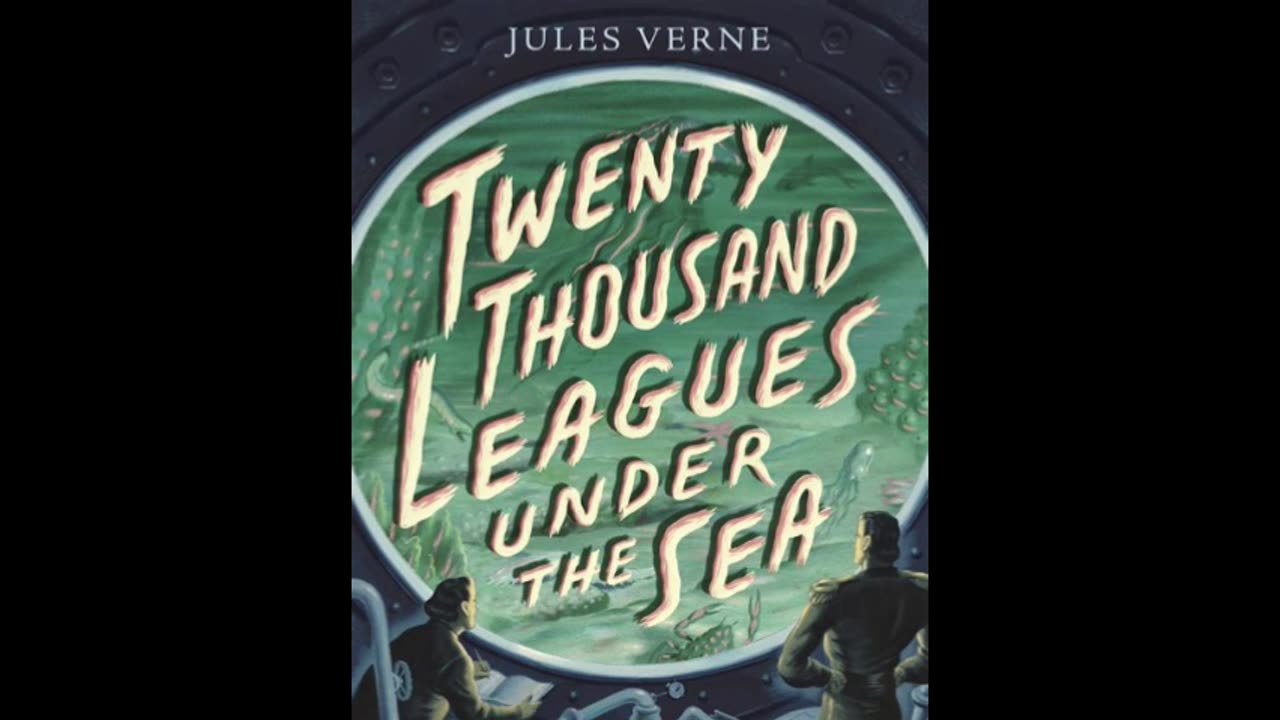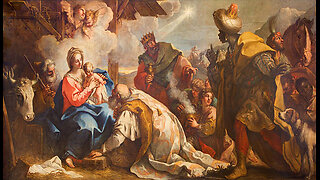Premium Only Content

Twenty Thousand Leagues Under the Sea by: Jules Vernes
"Twenty Thousand Leagues Under the Sea" by Jules Verne, first published in 1870, is a classic work of science fiction that combines adventure with speculative exploration of the undersea world. The novel follows the journey of Professor Pierre Aronnax, his servant Conseil, and a Canadian whaler named Ned Land after they are captured by the enigmatic Captain Nemo aboard the technologically advanced submarine, the Nautilus.
Plot Overview:
The story is set in the 19th century and begins when mysterious reports of a giant sea creature terrorizing the oceans lead to an expedition to track it down. However, when Aronnax and his companions encounter the "creature," they discover that it is, in fact, the Nautilus, a submarine far beyond the technology of the time. Captain Nemo, its captain, has renounced civilization and lives under the sea, exploring its depths and harvesting its resources.
The narrative takes the reader through magnificent and fantastical underwater landscapes, ranging from the lost city of Atlantis to deep-sea hunting expeditions. The novel explores themes of human ingenuity, isolation, and the power of nature. Nemo’s motivations remain mysterious, but he is portrayed as both a tragic hero and an antihero, driven by past trauma and a desire for revenge against the surface world.
Key Themes and Ideas:
1. Exploration and Adventure: The novel is a pioneering work of exploration fiction, delving into a part of the world (the oceans) that was largely unknown at the time.
2. Technology and Science: Verne’s depiction of the Nautilus is one of the first imaginings of a fully submersible ship. The novel is filled with details about marine biology, oceanography, and the technological innovations that make Captain Nemo's life beneath the sea possible.
3. Isolation and Freedom: Nemo’s isolation beneath the sea symbolizes his rejection of the world above. However, it also raises questions about what freedom truly means, as he becomes a prisoner of his own isolation.
4. Man vs. Nature: The novel highlights the dual relationship humans have with nature—on the one hand, as explorers and conquerors, and on the other, as part of and subject to its immense, uncontrollable forces.
Cultural Impact:
"Twenty Thousand Leagues Under the Sea" is regarded as one of Verne's most popular and influential works, having inspired numerous adaptations, including films, television shows, and even theme park attractions.
The character of Captain Nemo became a lasting symbol of rebellion, individualism, and scientific genius, and he reappears in Verne’s subsequent novel, The Mysterious Island.
The novel's balance of scientific curiosity and adventure continues to captivate readers, making it a foundational text in both literature and science fiction.
About the Author:
Jules Verne, renowned for his adventure and science fiction novels such as Twenty Thousand Leagues Under the Sea, had various associations with influential groups during his lifetime. While there is some debate and mystery surrounding his connections to fraternal orders and secret societies, here is an overview of his known or alleged associations:
1. Freemasonry:
Jules Verne was a Freemason, initiated into Amiens Lodge, Les Frères Unis (The United Brothers) in 1888. He attained the degree of Master Mason. This association has been confirmed by multiple biographers and Masonic historians.
Some scholars speculate that Masonic symbolism and themes related to Freemasonry appear subtly in his works. These include themes of exploration, progress, and humanity's connection with nature, which align with Masonic principles of enlightenment, knowledge, and discovery.
2. Speculated Rosicrucian Ties:
There is speculation (but no definitive proof) that Verne might have had connections to Rosicrucianism, another secretive, esoteric order. This theory is based on the mystical and symbolic elements in his novels. However, there is no concrete evidence that Verne was formally involved with the Rosicrucians.
3. Influence of Occult and Esoteric Thought:
Verne’s works, especially those that explore hidden knowledge, geography, and mystical realms, have led some researchers to suggest that he had contact with occult or esoteric circles in France during the 19th century. While this has not been definitively proven, Verne’s curiosity about science, philosophy, and the unknown likely brought him into contact with many intellectual and mystical ideas of his time.
-
 3:59:19
3:59:19
Deus Meum Que Jus
18 days agoThe Kybalion: A Study of the Hermetic Philosophy of Ancient Egypt and Greece By: The Three Initiates
465 -
 LIVE
LIVE
Akademiks
1 hour agoJay Z War against Diddy Accuser Lawyer GOES CRAZY! Lil Baby Speaks OUT! Cardi v Offset? Bhad Bhabie?
3,331 watching -
 1:21:17
1:21:17
Donald Trump Jr.
5 hours agoWhat are These Mystery Drones? Plus Inside the Swamp’s CR. Interview with Lue Elizondo | TRIGGERED Ep.200
82.6K79 -
 37:54
37:54
Kimberly Guilfoyle
5 hours agoAmerica is Healing, Plus Fani Willis Disqualified, Live with Shemane Nugent & Mike Davis | Ep. 182
52.4K35 -
 7:38
7:38
Game On!
2 hours agoThe picks you need for Thursday Night Football!
4.97K -
 LIVE
LIVE
LFA TV
23 hours agoBible Prophecy Was Center Stage in 2024 | Trumpet Daily 12.19.24 7PM EST
596 watching -
 LIVE
LIVE
Quite Frankly
6 hours ago"Divine Providence & The Three Wisemen" ft. Fr. Jason Charron 12/19/24
903 watching -
 1:58:28
1:58:28
Redacted News
4 hours agoBREAKING! Elon Musk DESTROYS spending bill, Ron Paul pushes to make him Speaker | Redacted News
118K241 -
 51:06
51:06
VSiNLive
3 hours agoCollege Football Playoff & Bowl Game Best Bets! | VSiN College Football Betting Podcast LIVE
28.1K1 -
 1:34:33
1:34:33
Candace Show Podcast
3 hours agoHow We Faked The Moon Landing With Bart Sibrel | Candace Ep 124
53.5K182